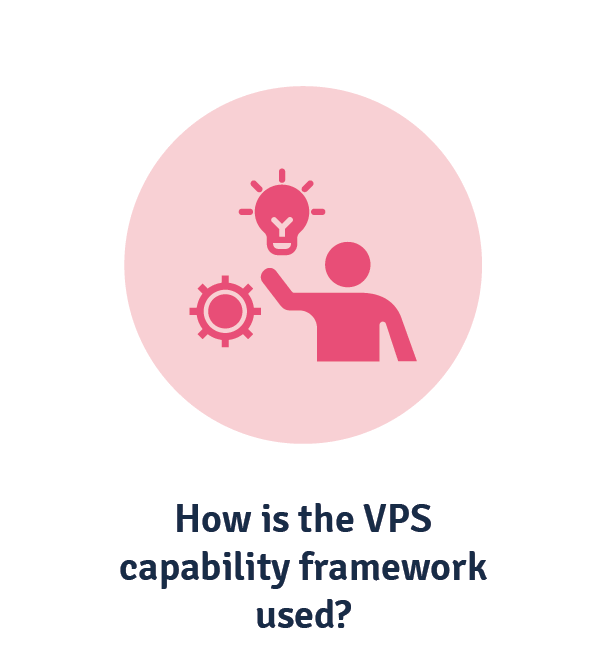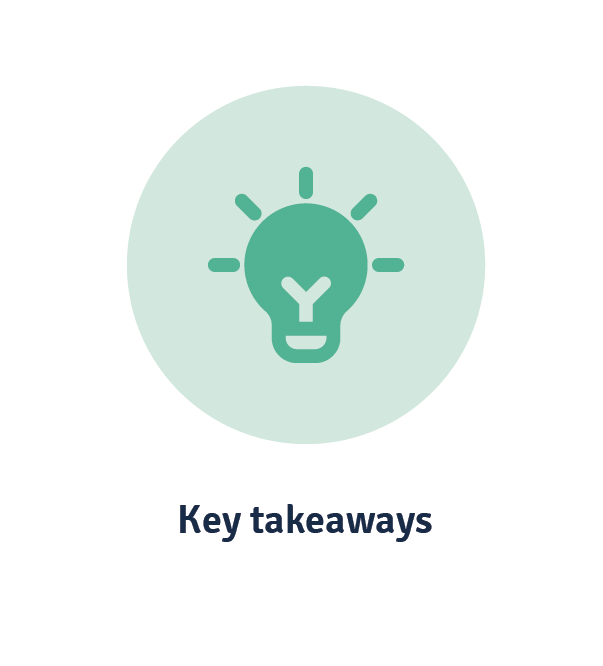There’s a lot to learn from how the public sector utilise capability frameworks, whether you’re in private enterprise, not-for-profit or even another public service department.
In this guide, we’ll walk through what the VPS capability framework is, how the Victorian public service uses it and the lessons to takeaway when implementing your own capability framework.
What is the VPS capability framework?
In their own words, the Victorian Public Service (VPS) Capability Framework outlines the capabilities that the VPS workforce needs to achieve their goals now and into the future. That is, the skills, knowledge and behaviours required of individual employees in order to affect organisational success.
How is the capability framework structured?
The framework is divided into five core capability groups known as domains.
- Personal attributes that support effective application of each domain.
- Meaningful outcomes through identification and definition of organisational goals.
- People leadership capabilities that ensure effective leadership of the workforce.
- Enabling delivery that enables development and delivery of effective solutions.
- Authentic relationships that build strong external relationships.
Each of these groups is broken down into a number of sub-capabilities. The framework is also underpinned by their values of responsiveness, integrity, impartiality, accountability, and leadership.

In this way, the VPS capability framework is fairly standard in its structure. Most public sector examples opt for simplicity over nuance when it comes to capability framework levels, with context for application provided by measures of competency or performance indicators. The VPS framework calls these proficiency levels.
- Foundational
- Applied
- Accomplished
- Leading.
While it’s common for public sector frameworks to reflect job levels in their proficiency grade descriptors, the VPS capability framework sticks to an ascending scale of performance. This reflects the whole-of-workforce application and enables better understanding of a capability’s performance expectations.
Linking performance to development is where the rubber hits the road for capability building. This is the ethos behind the performance learning management system (PLMS), our antidote to the broken corporate learning landscape. It’s the only solution that guides learners to master the specific capabilities of their roles to accelerate organisational performance. And using competency, you can show tangible behavioural improvements within Acorn PLMS, not just completions.
How is the VPS capability framework used?
The Victorian Public Sector Commission has a clear directive: Improve the performance of the public sector to provide more effective services for the Victorian public.
The capability framework is an extension of this, as well as an outline of how that directive can be achieved. It’s intended to guide:
- Recruitment (including interview questions)
- Job descriptors and design
- Performance evaluations
- Onboarding journeys
- Professional development.
This is also a whole-of-workforce tool rather than a framework designed for only one department or technical stream. In a certain number of job roles, VPS employees will likely possess all the skills, behaviours and knowledge outlined in the framework.
Designing a framework that can be used by the entire workforce works in tandem with the VPS’ values, creating a universal foundation for performance. That’s important for inter-department or whole-of-government projects where governance of performance may be trickier across different standards of expertise.
As with many public sector capability frameworks, the VPS utilise a number of complementary resources and systems to support a greater workforce strategy.
User guides
Managers are considered key stewards of workforce plans, with four areas in which to apply a framework.
- Workforce planning
- Building employee capability
- Employee career development
- Job design, recruitment and onboarding.
Hence the need for a manager user guide. Each of these four areas are broken down by tangible steps, some of which include the user of the VPS capability framework.
For example, under building employee capability, there are guiding questions to help facilitate learning in the flow of work.
- How can the employee adapt their existing work to develop this capability?
- Is there a project or piece of work that would develop their proficiency in this capability?
Similarly, the employee user guide for the VPS capability framework has a couple of guiding areas for application.
- Career guidance: Offers advice on how VPS employees can self-steer their career progression by utilising internal talent systems, such as their Job and Skills Exchange.
- Capability building: A templated plan for professional development that align with organisational values and knowledge systems.
It’s not a be-all-end-all to have user guides. But it can help reinforce some of the capabilities you’d like to see in managers themselves, and help new managers in particular build on foundational or underdeveloped leadership capabilities.
Self-assessment tools
Capability discovery tools are invaluable for engaging employees with organisational devices like capability frameworks, as they offer (guided) autonomy of their career pathways. They’re also widely used amongst public sector departments.
The capability discovery process has a number of benefits. It ensures:
- The right capabilities are mapped to the right job roles, and emerging gaps are proactively filled.
- Employees have the right level of competency in the necessary capabilities to perform their job role.
- Managers can more accurately assess the talent needs of their teams.
Then there’s the added advantage of centralised data management, which only makes for faster process improvements and tangible, visual data to use in decision making.
Capability-led L&D
There are plenty of reasons for organisational development to lead with capabilities; they’re tangible, sustainable and universal, to start with. But it’s particularly useful when procuring eLearning technology to deliver L&D strategy.
If you’re spending hours creating content or literally spending money buying it, you’ll want some kind of return on investment. That can be more easily defined and proven with capability mapping functionality, as it allows you to create highly personalised development plans.
Say there’s a new manager who’s done a self-assessment and decided their ability to lead and navigate change is only at a foundational proficiency level, compared to the accomplished level required of the job. They go into your learning management system, search for the capability Lead and navigate change, and find a readymade series of courses matched to each level of proficiency.
Not only is that a positive user experience, but the system analytics can show verifiable improvements (or lack thereof) through progression and completion rates.
Key takeaways
A capability framework should underpin your workforce and ways of work, but if there’s anything to be learned from the VPS capability framework it’s that it should only be one tool you use to guide organisational development.
Another important thing to remember is that competency levels are just as important as capabilities, since these translate to performance outcomes. And those outcomes guide some of the supporting tools you may choose to offer, such as self-assessments, as well as the business impact of personal development plans.
Related Reads on This Topic

Why You Need a Competency Model for Organisational Development
Competency models are the mortar to the capability bricks of your business. Discover their benefit for organisational development…

How to Use a Capability Discovery Tool for Organisational Capability Building
A capability discovery tool provides greater insight into workforce development needs. Read on to learn how to optimally use a discovery tool…

A Guide to Understanding the Capability Development Framework
A capability development framework is the key driver behind upskilling your workforce and linking their progress with business priorities…


